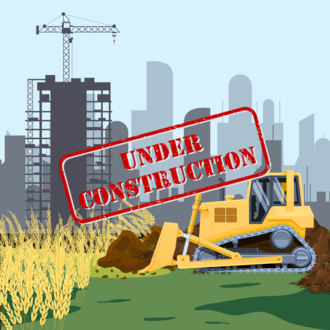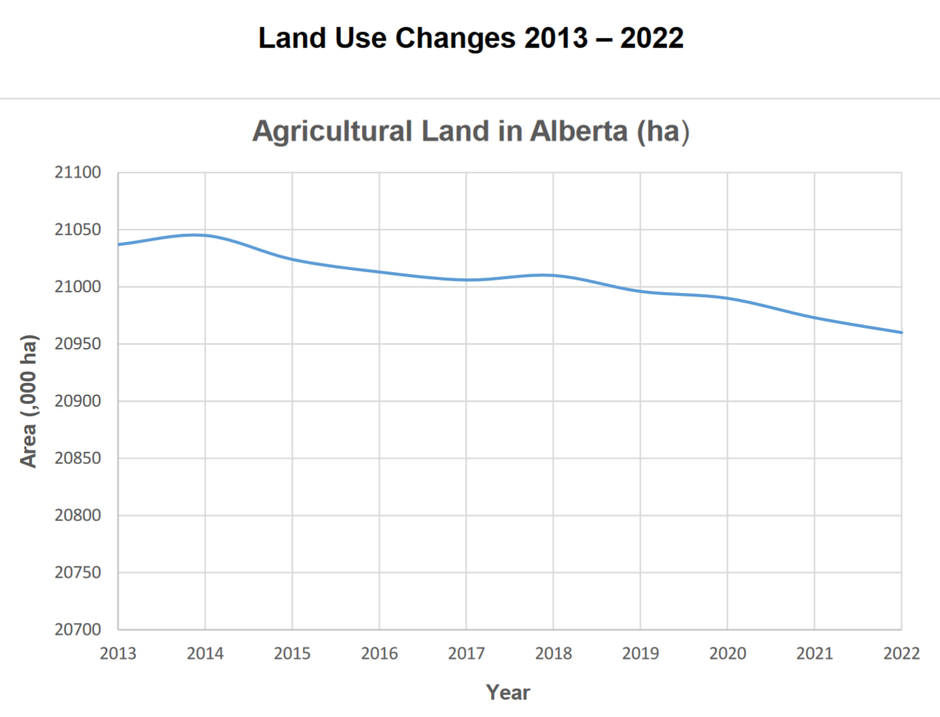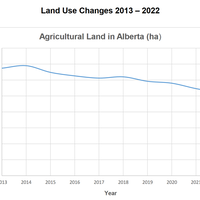Edmonton Metropolitan Region and rural landowners lead the way in the preservation of agricultural land

Alberta's farmland is being lost to development.
According to the provincial government's 2022 report, Alberta saw a loss of over 23,000 hectares of agricultural land from 2011 to 2020 with an additional loss of 13,071 from 2021 to 2022.
Much of the lost land was highly productive crop land.
Dr. Brent Swallow, Professor of Agricultural and Environmental Economics at the University of Alberta, says that farmland close to cities and the Highway 2 corridor are at the highest risk of being fragmented and converted out of agricultural use, while land farther from cities is more likely to be consolidated into larger farms.

Although Agriculture has been called a driving force in Alberta’s economy by the current premiere and the 2008 Land Use Framework recognized land fragmentation as an area of concern, the provincial government has yet to take action or develop policies.
Currently municipalities are responsible for regulating, or not, as they see fit.
Municipal law makers cited several reasons for hesitating to act including concern about infringing on property holders' freedoms or negatively impacting the municipalities relationship with community members.
However the municipalities in the Edmonton Metropolitan Region stand out for choosing to take decisive action to preserve agricultural land.
In 2017 and 2018, Edmonton Metropolitan Region Board passed minimum density requirements to increase growth within residential areas and discourage outward growth and development.
Additionally, the City of Edmonton's zoning bylaw amendment, passed on October 23 this year as part of the city's municipal development plan, will allow for greater density throughout the city by allowing different types of housing to be built in all zones.
You can learn more about the zoning bylaw renewal here.
Research shows that Albertans are concerned about the loss of agricultural land and are therefore likely to be supportive of government action like those taken by Edmonton Metropolitan Region Board
An Alberta Land Institute (ALI) survey of the Edmonton Metropolitan Region found that over half of Albertans recognized agricultural land as having conservation and positive environmental value.
Of those surveyed, 95 per cent felt that conserving agricultural land for future generations was important and 65 per cent recognized the contribution of agricultural land to clear air and water and the conservation of natural systems.
Other concerns included rural landscape preservation, loss of food production capacity, high service costs, and conflicts between farmers and new rural residents.
Some landowners have chosen to take the initiative to protect agricultural land through conservation.
The Mappin family in central Alberta decided to place three conservation easements on their land to protect native grasses.
In Southern Alberta, an organization of farmers called the Southern Alberta Land Trust Society (SALTS) have decided to place easements on their lands to preserve forest, grassland and rangeland.
The conservation easements utilized by the Mappin family and SALTS are a conservation option currently available to landowners under the Alberta Land Stewardship Act and can be used as a tool to prevent fragmentation.
Conservation easements allow landowners to cede certain landowner rights to a qualified organization–often land trust or conservancy charitable or non profit organizations–in return for compensation based on market value.
The land must be used for recreational use, open space use, environmental education or research and scientific studies– which additionally prohibits fragmentation and redevelopment.
Conservation easements also protect watersheds.
The over 162 square kilometres of land SALTS has conserved over the last 25 years has helped protect watersheds for Calgary and Lethbridge.
Individual conservation efforts like these are inspiring and effective but Albertans need more involvement from the provincial and municipal governments to aid in the protection of agricultural land.
The cost of implementing protections has been of concern for policy makers.
However, ALI’s 2022 research shows that Albertans are more willing to pay for conservation efforts than accept financial compensation for allowing urban development of agricultural lands around the province’s six largest cities.
Policy makers should consider how they can utilize this support for conservation to protect agricultural land from fragmentation.
Additionally, municipalities should consider making use of other market-based conservation tools such as Transfer of Development Credits (TDCs) or Conservation Offsets.
To find out more, read our related research:
Fragmentation and Conversion of Agricultural Land - Analysis of Values to Inform Policy
Economic Evaluation of Farmland Conversion and Fragmentation in Alberta
The Implementation of Market Based Conservation Tools Under ALSA: A Review
